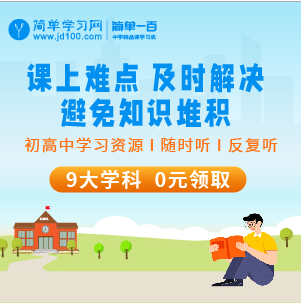![]() 绝密★启用前
绝密★启用前
2025年普通高等学校招生全国统一考试(全国二卷)
英语
本试卷共150分,共12页。考试结束后,将本试题和答题卡一并交回。
注意事项:
1. 答题前,考生先将自己的姓名、准考证号码填写清楚,将条形码准确粘贴在条形码区域内。
2. 选择题必须使用2B铅笔填涂;非选择题必须使用0. 5毫米黑色字迹的签字笔书写,字体工整,笔记清楚。
3. 请按照题号顺序在答题卡各题目的答题区域内作答,超出答题区域书写的答案无效;在草稿纸、试卷上答题无效。
4. 作图可先使用铅笔画出,确定后必须用黑色字迹的签字笔描黑。
5. 保持卡面清洁,不要折叠、不要弄破、弄皱,不准使用涂改液、修正带、刮纸刀。
第一部分 听力(共两节,满分30分)
做题时,先将答案标在试卷上。录音内容结束后,你将有两分钟的时间将试卷上的答案转涂到答题卡上。
第一节(共5小题;每小题1. 5分,满分7. 5分)
听下面5段对话。每段对话后有一个小题,从题中所给的 A、B、C三个选项中选出最佳选项。听完每段对话后,你都有10秒钟的时间来回答有关小题和阅读下一小题。每段对话仅读一遍。
例: How much is the shirt?
A. £19. 15. B. £9. 18. C. £9. 15.
答案是C.
1. How will the woman probably get to Baxley?
A. On foot. B. By taxi. C. By bus.
2. What is the man going to do?
A. Have some dessert. B. Pay the bill. C. Cancel the trip.
3. What are the speakers talking about?
A. Buying a computer. B. Doing research. C. Saving money.
4. What is the man’s major?
A. Psychology. B. Biology. C. English.
5. What does Linda suggest?
A. Buying a sports watch. B. Borrowing Mary’s watch. C. Getting the watch repaired.
第二节(共15小题;每小题1. 5分,满分22. 5分)
听下面5段对话或独白。每段对话或独白后有几个小题,从题中所给的 A、B、C三个选项中选出最佳选项。听每段对话或独白前,你将有时间阅读各个小题,每小题5秒钟;听完后,各小题将给出5秒钟的作答时间。每段对话或独白读两遍。
听第6段材料,回答第6、7题。
6. Why does Peter make the call?
A. To arrange a visit. B. To extend an invitation. C. To confirm an appointment.
7. Where will the speakers meet on Tuesday evening?
A. At the theatre. B. At a snack bar. C. At Delia’s office.
听第7段材料,回答第8、9题。
8. What does Sam say about his daughter?
A. She dislikes doing homework. B. She overuses her smartphone. C. She feels lonely at school.
9. What is Sam’s attitude towards the school policies?
A. Supportive. B. Uncertain. C. Disapproving.
听第8段材料,回答第10至12题。
10. What is the probable relationship between the speakers?
A. Tourist and guide. B. Husband and wife. C. Trainer and trainee.
11. Who came up with the idea of going rock climbing?
A. Billy. B. Karen. C. Max.
12![]() What is Jessie’s plan for tomorrow?
What is Jessie’s plan for tomorrow?
A. Going horseback riding. B. Playing table tennis. C. Rowing on the lake.
听第9段材料,回答第13至16题。
13. What did Frank do before coming to Susanna?
A. He went to a tech fair. B. He signed a contract. C. He had a job interview.
14. What does Frank hope to get?
A![]() A promotion. B. A vacation. C. A bonus.
A promotion. B. A vacation. C. A bonus.
15. When will Frank know the result from his company?
A. Wednesday. B. Thursday. C. Friday.
16. Who is Susanna?
A. Frank’s client. B. Frank’s lawyer. C. Frank’s boss.
听第10段材料,回答第17至20题。
17. Who is the Mini Camp intended for?
A. Four-year-olds. B. Five-year-olds. C. Six-year-olds.
18. Which activity does the Older Summer Camp organize?
A. Museum visits. B. Bowling games. C. Family gatherings.
19. What is a requirement for joining the field trips?
A. Camping experience. B. Parental permission. C. Swimming skills.
20. What will the speaker do next?
A![]() Collect fees. B. Answer questions. C. Show a short video.
Collect fees. B. Answer questions. C. Show a short video.
第二部分 阅读(共两节,满分50分)
第一节(共15小题;每小题2. 5分,满分37. 5分)
阅读下列短文,从每题所给的A、B、C、D四个选项中选出最佳选项。
A
English Market Towns to Visit in the UK
English market towns come in many shapes and sizes. Each has a personality shaped by the goods and services produced and traded for centuries. But each town has more to do than shop.
Hereford, Herefordshire
Hereford has remained a lively market town since 1189. Skirting the town square, you’ll find lovely shops, eateries, and the Black and White House Museum. The Hereford Cathedral is the most impressive building in town. It’s also home to an ancient library. One of the four original copies of the Magna Carta is displayed there.
Ludlow, Shropshire
Ludlow is known as the Foodie Center of England. Butcher shops, greengrocers, bakeries, and cheese shops line the town square. Bordering the square, the Ludlow Castle is a “must explore” medieval stronghold. The three-day Ludlow Food Festival is held each September.
Shrewsbury, Shropshire
Getting to Shrewsbury Town Center from London is challenging but worth the anxiety. The River Severn has a significant turn through town, almost making an island of Shrewsbury Town Center. The shape creates a perfect market where goods could be shipped and received using the river as a highway. Flowers are everywhere-hanging baskets, window boxes, and planters-just what you imagine in an attractive English market town.
Mevagissey, Cornwall
Even if you haven’t been to the small fishing village Mevagissey, you’ve probably seen it in a movie or British TV show. The working harbor(港口) took shape in 1774. Fishermen go out to sea daily and sell their fish in harbor-side markets. Don’t leave the harbor without a traditional Comish pie. It’s delicious.
1. Where can you find an original copy of the Magna Carta?
A. In the Ludlow Castle. B. In the Foodie Center of England.
C. In the Hereford Cathedral. D. In the Black and White House Museum.
2. What is a feature of Shrewsbury Town Center?
A. It’s situated near a big island. B. It’s almost surrounded by water.
C. It’s known for its flower festival. D. It’s easily accessible from London.
3. What does the author suggest visitors do in Mevagissey?
A. Try the Cornish pie. B. Watch a British TV show.
C. Go fishing in the sea. D. Take pictures of the harbor.
B
Kathy Ho teaches high school inside Lucile Packard Children’s Hospital Stanford (LPCH). “Sometimes I don’t like saying that I’m a teacher,” says Ho. “People get in their minds an idea of what teachers do, but that’s not really what it is here.”
“Here” is room 386, where each year, about 500 LPCH patients also become students. The hospital school is free of parents, doctors, and medical procedures. It’s a place of learning. About half of Ho’s students stay for a week or less; others are there for more than a year. Most of Ho’s students will recover, which means that preparing them to return to school is an increasingly important component of care.
Still, in room 386, academics don’t come first. Physical health and mental health are the priority. “If you’re scared about something and thinking only about that, there’s no way you’re going to be able to learn,” Ho says. “I’m a coach, an adviser, and a comforter, and that’s what it means to be a hospital teacher.”
There are up to 30 students at any given time in Ho’s class. She generally works with their regular teachers to get lessons and tests being used at their home schools. Some teachers don’t give the kids any assignments; they express sympathy instead. “I feel like it is a disservice to the kids,” Ho says. “They think their teachers don’t care about their schoolwork.”
Ho recognizes the psychological benefit of helping kids keep up with their peers (同龄人) outside the hospital. “I actually think the medicine is only a small piece for some problems,” says Julie Good, director of pain management services at LPCH. “It’s about problem-solving around what it means to have a full life. Those kids have dreams. School can keep those dreams alive by giving kids a way to learn and grow.”
4. Who does Ho teach at LPCH?
A. Sick children. B. Young nurses.
C. Medical students. D. Patients’ parents.
5. What is a characteristic of Ho’s job?
A. Prioritizing academics. B. Encouraging innovation.
C. Treating various diseases. D. Playing multiple roles.
6. What does the underlined word “it” refer to in paragraph 4?
A. Offering regular lessons. B. Paying extra attention.
C. Assigning no schoolwork. D. Showing no sympathy.
7. How does the hospital school benefit the students according to Good?
A![]() It eases peer pressure. B. It helps them live in hope.
It eases peer pressure. B. It helps them live in hope.
C. It frees them from aches. D. It entertains them with stories.
C
When Sonja Detrinidad opened her online shop selling houseplants![]() she didn’t have high hopes for it. But the opposite happened: She was flooded, shipping out 1,200 orders in June of 2020 alone. In the past year, Detrinidad sent out more than 70,000 plants. Her success is just one example of increased time at home leading to an explosion in the houseplant industry.
she didn’t have high hopes for it. But the opposite happened: She was flooded, shipping out 1,200 orders in June of 2020 alone. In the past year, Detrinidad sent out more than 70,000 plants. Her success is just one example of increased time at home leading to an explosion in the houseplant industry.
“Plants are in fashion right now,” says Dr. Melinda Knuth, a researcher from the University of Florida. “People who live in plant-rich environments report a higher life satisfaction rating, ” she says. “Adding more nature to our environment can change our mood and how we think.” Plants can improve our state of mind in a few ways but the biggest is by decreasing our level of cortisol, the stress hormone (激素) in our body.
“Students who are around plants perform better academically than students who are in a classroom without plants,” says Knuth. “This productivity also translates into the workplace for adults. Our study showed that there was a 30% decrease in sick leave for people who were in plant-rich workplaces.”
If you’re among the groups of people who are enjoying the mental and physical health benefits of surrounding yourself with plants, don’t beat yourself up if one (or a few!) doesn’t make it. “Doctors practice medicine and lawyers practice law and you should allow yourself the practice it takes to sustain a plant. Tending to plants is an exercise in patience and learning. Be invested in taking care of it, but if it dies, go get another one,” Detrinidad says.
8. How was Detrinidad’s business when it started?
A. It faced tough competition. B. It suffered a great loss.
C. It got lots of financial support. D. It went surprisingly well.
9. What is one of Knuth’s findings about plants?
A. They appeal more to students. B. They purify the environment.
C. They raise the cortisol level. D. They enhance productivity.
10. What does Detrinidad try to explain by mentioning doctors and lawyers?
A. The necessity of social skills. B. The meaning of sustainability.
C. The importance of repeated efforts. D. The value of professional opinions.
11. What can be a suitable title for the text?
A. Time to Replace Houseplants B. Plants Boost Your Mood
C. Tips on Choosing Houseplants D. Plants Brighten Your Home
D
Does your soul die a little every time you throw away unused food? Mine does. Maybe that feeling comes from growing up in South Africa, where the phrase “there are children starving in Africa” was more of an uncomfortable reminder of fact than a prayer at dinner time.
Food waste is a growing concern in the restaurant, supermarket, and supply chain industries. From technological solutions to educational campaigns, food producers and sellers are looking for ways to use more of what we’re already growing. But last month, one popular New York City restaurant tried a different way: It changed its menu to exclusively (专门) offer food that would otherwise be thrown away.
For two weeks in March, Greenwich Village’s Blue Hill restaurant was renamed wastED, and served items like fried skate cartilage, a juice pulp burger, and a dumpster diver’s vegetable salad. Each dish was tailor-made to raise awareness regarding food waste.
A study by the Food Waste Alliance determined that the average restaurant generates 33 pounds of food waste for every $1,000 in revenue (收入), and of that waste only 15.7% is donated or recycled. Up to 84.3% is simply thrown out. Restaurants like Silo in the UK have experimented with zero-waste systems, but wastED took the concept to its logical conclusion.
It should be noted that none of the items on wastED’s menu was technically made from garbage. Instead, all the ingredients (配料) used were examples of meat cuts and produce that most restaurants would never consider serving. Things like kale ribs, fish collars, rejected sweet potatoes, and cucumber butts were all re-appropriated and, with the help of a number of good chefs, turned into excellent cuisine.
Though wastED received enthusiastic reviews, it was designed from the start as a short-lived experiment; Blue Hill has since returned to its regular menu. Nevertheless, it serves as a reminder that there are many ways to address problems of sustainability, and that you can make an amazing meal out of almost anything.
12. What can be inferred about the author’s early life?
A. He witnessed food shortage. B. He enjoyed the local cuisine.
C. He donated food to Africans. D. He helped to cook at home.
13. Why did Blue Hill carry out the experiment?
A. To customize dishes for guests. B. To make the public aware of food waste.
C. To test a food processing method. D. To improve the UK’s zero-waste systems.
14. What is paragraph 5 mainly about?
A. Why the ingredients were used. B. Which dishes were best liked.
C. What the dishes were made of. D. Where the ingredients were bought.
15. What can we learn about wastED?
A. It has ended as planned. B. It is creating new jobs.
C. It has regained popularity. D. It is criticized by top chefs.



